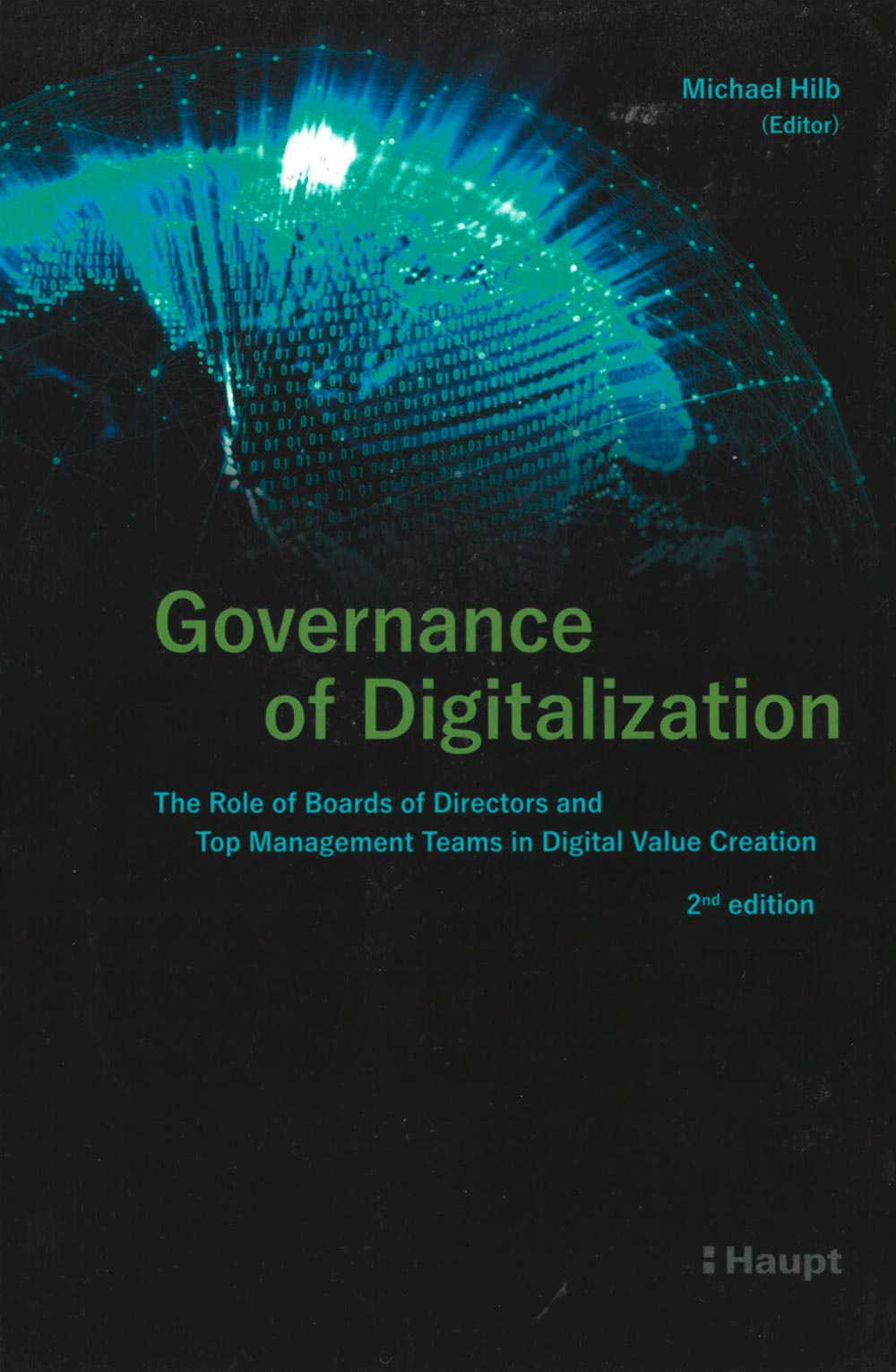
Purpose
The Guidelines on the Corporate Governance of Business Excellence provide the Board of Directors (BoD) with guidance on how to start/conduct/ improve the governance of Business Excellence (Direction and Control of TQM), and how Business Excellence can be introduced to the organization.
Scope
The guidelines are written for large organizations and small and medium-sized enterprises (SMEs), with professional and independent boards, but can be applied by any organization and its oversight body. The guidelines include rules for the BoD and oversight process itself, as well as practical guidance for the organization that is overseen.
Development
The guidelines were developed under the leadership of Dr. Karl J. Koller and went through an extensive reviewing process. Thus, the guidelines represent a collaborative and global effort. Given the developments in Business Excellence, the guidelines will be reviewed and updated on a regular basis.
Application
The guidelines provide a global cross-sectoral perspective and serve as a basis for adaptation based on industry, organization type, and jurisdiction. For a detailed, systematic Business Excellence approach it is recommended to apply one of the internationally respected Business Excellence Models.
Core Principles
- The board increases its focus on Business Excellence: Each board member becomes familiar with Business Excellence in general and should be a role model for Excellence. The board develops the directions for Striving for Excellence. This can be achieved through focused training, individual study, or exchanges with internal and/or external specialists. The board ensures the board’s and top management’s commitment and involvement in Striving for Excellence is strengthened as this is the key to becoming an excellent organization. Business Excellence cannot be delegated. Therefore, the board as a body has to ensure successful Striving for Excellence through knowledgeable board members. The board could get additional support from internal and external experts in Business Excellence.
- The board develops vision, mission, purpose, strategy, and values: The board involves its stakeholders in defining, shaping, and communicating the organization’s vision, mission, purpose, strategy, and values. The board develops the strategy and values, making sure appropriate actions are taken. The board ensures that their directions are communicated to all stakeholders and understood by them.
- The board is familiar with the executives responsible for Excellence within the organization: The board meets with the executives responsible for Business Excellence in a regular and timely manner. This could be yearly or even on an ad-hoc basis, depending on the nature of the organization and its structure. Pull and push processes of communicating with the responsible people should be defined in the organization’s governance.
- The board requests that all employees receive Business Excellence training at regular intervals: Oversight of corporate talent is part of the board’s responsibility. The board ensures sufficient Business Excellence training for all employees, on all levels, in all areas. The objective is to develop the overall organization continuously towards Excellence and to keep the organization on its highest maturity level.
- The board discusses, based on Business Excellence Assessments, the strengths and areas for improvement of its organization as well as the appropriate metrics that will allow the board to understand the organization’s performance. Business Excellence Frameworks assist the board in developing the organization towards Excellence. Applying a Business Excellence Framework gives the board the opportunity to get answers about the WHY (Direction), HOW (Execution), and WHAT (Results) of its organization to further develop the organization in these three dimensions.
- The board defines the role Business Excellence plays in their organization’s current and future business model, including the identification of strengths and opportunities for improvement: The organization’s Business Excellence strategy and the role of Business Excellence in future business models must be an area of strategic focus and be overseen by the board, including both the review of strengths and areas for improvement. This can be achieved by using a Business Excellence Framework. In this context, it is important to note that being an organization with a high maturity level (Excellent) is an asset and a strong potential positioning point for the organization.
- The board allocates adequate resources for Striving for Excellence: It is important that adequate funding and organizational capabilities are made available for Business Excellence activities, and thus the board ensures that sufficient budgets for Business Excellence investments and operations are made available. The funding does not only need to cover the hardware itself, but investments in people and training/development are equally important. This will also benefit creativity, innovation, and disruptive thinking within the organization.
- The board recognizes its responsibility for society and the environment: The board recognizes the role that the organization can play in supporting the United Nations Sustainable Development Goals and Guiding Principles on Business and Human Rights. The board ensures that the organization prevents and mitigates adverse human rights impacts that are directly linked to their operations, products, or services by their business relationships, even if they have not contributed to those impacts. The board ensures that the organization will respect and act on these goals. The board ensures that the organization manages products and services throughout its lifecycle, including reusing and recycling where appropriate, considering any impact on public health, safety, and the environment.
Guiding Principles
These 15 Guiding Principles on the Corporate Governance of Business Excellence are derived from the discussion of the board’s internal governance and the board’s responsibilities to the organization. It is important for board members to understand that Business Excellence generates incredible opportunities for organizations and their stakeholders. The board’s role is to lead on the road to Excellence. Business Excellence has to be managed.
- The board increases its Business Excellence literacy and makes efforts to be role models for Excellence.
- The board defines the organization’s mission, purpose, strategy, and values for the organization, as well as an aspirational vision that resonates with its stakeholders.
- The board ensures that its vision, mission, purpose, strategy, and values are communicated effectively to key stakeholders and that these directions are understood by them. This helps to create an atmosphere of openness, trust, confidence, and commitment.
- The board sets the Business Excellence framework in such a way that it ensures adequate measures to understand the organization’s overall maturity level, and to develop the organization continuously towards Excellence.
- The board ensures that the organization understands the ecosystem, including the megatrends, and the consequences on it of the United Nations Sustainable Development Goals (UNSDG) and Guiding Principles on Business and Human Rights.
- The board develops and supports a shared leadership culture for the organization and reviews and improves on a regular basis the effectiveness/efficiency of the board’s leadership behavior.
- The board demonstrates the desired behaviors for acting ethically, with integrity and social conscience, making sure that the board and everybody in the organization demonstrates these desired behaviors in their own actions.
- The board ensures that the leaders understand and steer a culture of trust and integrity to align with its purpose and recognizes when there is a need for the culture to be adopted.
- The board allocates adequate resources for managing Business Excellence activities.
- The board is familiar with and communicates with the executives responsible for Business Excellence.
- The board makes sure that all employees receive training in Business Excellence/Continuous Quality Management on a regular basis.
- The board discusses on an annual basis the strengths and opportunities for improvement of the organization (Self-Assessment based on a Business Excellence Framework). The board reviews the organizational culture to ensure a focus on meaningful work, engagement, empowerment, accountability, development, and well-being of all employees.
- The board asks for the appropriate metrics that will allow them to understand the organization’s overall maturity level, and to drive the organization to achieve excellent performance results.
- The board makes sure that the organization understands the importance and benefits of having a focus on creativity, innovation, and disruptive thinking.
- The board ensures that the organization promotes concern for the environment and the scarcity of resources, raising awareness of the importance of adopting a responsible approach to the environment, and motivates to excel beyond minimal compliance with laws and regulations.
Glossary
Board of Directors (BoD): Group of individuals appointed or/and elected by shareholders or other stakeholders and mandated to direct (vision, mission, purpose, strategy, values) and oversee the organization, establish policies for management, appoint and oversee the executive management team and make decisions on major organizational issues. The board of directors can be the governance body of private, public, and other organizations.
Business Excellence: Business or Organizational Excellence, within the context of Total Quality Management, is often described as outstanding practices in managing an organization (Direction/Execution) and achieving outstanding performance (Results), all based on a set of fundamental concepts and values. Based on these practices, Business Excellence Models have been developed to demonstrate how a world-class organization should operate. These Business Excellence Models have been developed and continue to be modified through extensive study of the practice and values of the world’s best-performing organizations. Business Excellence Models are also successfully applied by small and medium-sized enterprises (SMEs). Over the last twenty years, there has been an increasing trend for organizations to apply these Business Excellence Models and integrate the principles and practice not only in defining the directions but also with their day-to-day operations, thereby achieving the many benefits Business Excellence brings.
Operational Excellence: Operational Excellence is an outstanding practice in managing the organization on an operational level. Operational Excellence is a part (Execution) of Business Excellence/Total Quality Management, however, it does not cover the Direction part. It represents competition based on efficient internal operations (low cost, reliability, accuracy, availability).
Business Excellence Models: A Business Excellence Model or Framework is an integrated leadership and management system that defines the elements essential to strive for sustainable organizational excellence. Business Excellence Models are frameworks that can help organizations focus their direction and action in a more systematic and structured way that will result in increased performance. The models are holistic, which means they focus on all levels, all areas, and all dimensions of an organization. They also focus on factors that drive performance. Several Business Excellence Models (see list below) are internationally recognized for assisting the adoption of Business Excellence principles, and for being an effective tool for measuring how thoroughly these adoptions have been integrated. There are several Business Excellence Models worldwide. Though these models vary from each other, somewhat, they are all very similar in important ways. The most common Business Excellence Models are:
- Japan Quality Award Model (Deming Model) – Japan
- Malcolm Baldrige National Quality Award Model (MBNQA) – USA
- EFQM Excellence Model – European Foundation for Quality Management (EFQM) – World- wide most used model; used throughout Europe, the Middle East, Asia, South America, and Africa. Used in more than 50 countries, by more than 50,000 organizations.
- Canadian Business Excellence Model – Canada
- Australian Business Excellence Framework (ABEF) – Australia
Sources
Business Excellence Frameworks
EFQM Excellence Model – European Foundation for Quality Management – Belgium http://www.efqm.org
Japan Quality Award Model (Deming Model) – Japan http://www.juse.or.jp/deming_en/
Malcolm Baldrige National Quality Award Model (MBNQA) – USA https://nist.gov/baldrige/baldrige-award
Canadian Business Excellence Model – Canada https://excellence.ca/canada-awards-for-excellence/
Australian Business Excellence Framework (ABEF) – Australia http://www.businessexcellenceaustralia.org.au/awards/
Further Sources
United Nations Sustainable Development Goals, United https://sdgs.un.org/goals
Guiding Principles on Business and Human Rights: United Nations Human Rights, United Nations, New York and Geneva, 2011. https://ohchr.org/Documents/Publications/GuidingPrinciplesBusinessHR_EN.pdf
Business and Human Rights Guidance for Board Directors: Equality and Human Rights Commission, 2016. https://www.equalityhumanrights.com/en/advice-and-guidance/business-and-human-rights-guidance-board-directors
Responsibility from the top down: Why human rights due diligence must be a mandated concern of corporate boards, Business & Human Rights Resource Centre, London-UK, New York, USA. https://business-humanrights.org/en/blog/responsibility-from-the-top-down-why-human-rights-due-diligence-must-be-a-mandated-concern-of-corporate-boards/
Are you a Role-Model Leader?: National Institute of Standards and Technology, S. Department of Commerce, Gaithersburg, MD, USA. https://www.nist.gov/baldrige/self-assessing/improvement-tools/are-you-role-model-leader
Board of Director Responsibilities: National Institute of Standards and Technology, S. Department of Commerce, Gaithersburg, MD, USA. https://www.nist.gov/baldrige/board-director-responsibilities
The Impact of Total Quality (TQM) on Financial Performance: Evidence from Quality Award Winners. Hendricks Kevin B., Singhal Vinod R., March 2000. https://www.itqm.ch/en/articles-about-business-excellence
Cost of Quality: American Society for Quality (ASQ), Milwaukee, WI, https://asq.org/quality-resources/cost-of-quality
- Board Views
From Corporate Governance of Sustainability to Sustainable Corporate Governance
What is the best way to integrate sustainability into the corporate governance framework? Boards of directors have chosen two distinct paths: the functional way, which focuses on corporate governance of sustainability, and the foundational approach, which leads to sustainable corporate governance. This article assesses the merits and limitations of both approaches and calls for a transition to sustainable governance. This requires board members to engage regularly with stakeholders and to continuously debate the underlying assumptions to further develop the governance framework as required.
- Board Views
Striving for Excellence in Venture Governance
The contribution of the venture board to entrepreneurial value creation, and its pivotal role in venture ecosystems, is often overlooked despite a long history of venture governance. History teaches us six principles of excellence in venture governance.
- Board Views
From Corporate to Ecosystem Governance
Mastering ecosystems is increasingly seen as key to strategic value creation in highly dynamic environments. The role of governance has become a key differentiator between organizations that win or lose from the ecosystem game. This article discusses the importance of governance to the successful creation, development, and growth of ecosystems and presents eight challenges to be addressed along the ecosystem lifecycle. It continues with a taxonomy of ecosystem governance that provides a menu of effective governance mechanisms to address these challenges. The article concludes with advice on how best to manage the transition from a corporate governance to an ecosystem governance focus.
- Board Views
Mission Accomplished? The State of Digital Governance
Five years ago, I invited a number of thought leaders to reflect with me on the role of the board of directors in the face of digitalization. The result was a collection of twelve perspectives on the governance of digitalization (Hilb 2017). Where are we now, five years, one pandemic, and perceived thousands of articles on digital governance later?











